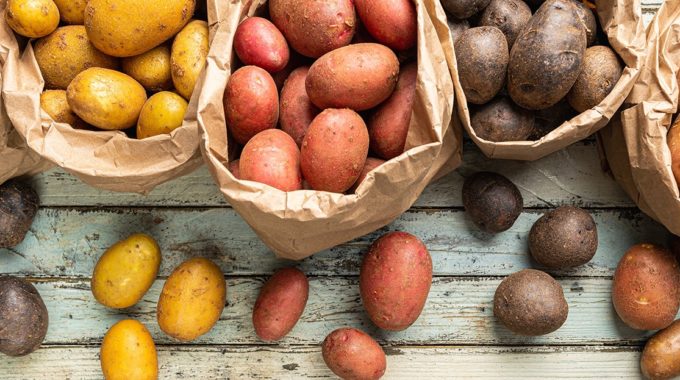Hot potatoes: singing the spud’s praises
Despite the fact that it’s the world’s fourth-largest food crop, very few of us would put much thought into the potato. But this unpretentious root veg actually belongs to a fascinatingly diverse family, made up of thousands of varieties. And if you look beyond the anonymous bags of potatoes at the supermarket, you’ll open yourself up to a whole new world of culinary delights. In fact, the humble spud can be truly spectacular.
Here in Australia, there are hundreds of potato varieties available, but you’ll be unlikely to find more than a handful in Coles or Woolies. However, there’s a small number of “potato nerds” out there who are quietly working behind the scenes to shine a spotlight on the potato’s potential. And they’re passionate about sharing their knowledge.
Chef and farmer Graham Liney has been working with potatoes for 30 years. He was inspired to start bringing new varieties to Australia after visiting a friend in the UK.
“I was asked to cook lunch,” he says. “My friend had a rare plant nursery, and I dug up these little knobbly potatoes that looked like ginger. They were called Pink Fir Apple. I still regard them as the best salad potato on the market. But you could never sell them here back then because they were a funny shape. The public wasn’t ready. Then I introduced Kipfler potatoes at my market stall. I think the first day I put 12 boxes out and sold eight. The following week, it was 24, then a pallet. And off it went.”
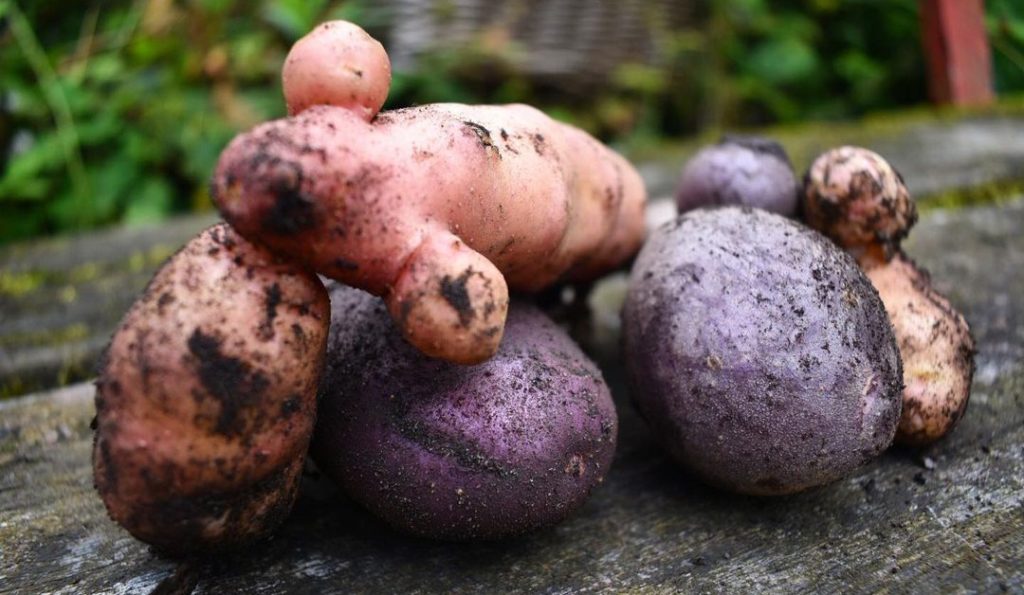
From gourmet to ghastly
Liney has since been responsible for bringing dozens of potatoes to Australia. In fact, almost every new variety of potato that’s been commercialised or registered in Australia is his doing. He began with yellow-flesh varieties, such as Desiree and Nicola. But his love has always been for gourmet varieties like Andean Sunrise, Midnight Pearl, Purple Sapphire and Gourmandine, which won the French “Flavours of the Year” award three times.
Unfortunately, Australia’s potato market isn’t big enough for the commercial production of many gourmet varieties. In fact, the majority of potatoes produced here are grown not for flavour, but for their high-yielding performance. These spuds are mostly destined for supermarkets or processed food manufacturers. And you might be surprised to learn that the potatoes used to make frozen chips are all but inedible in their normal state.
“They’re inedible for the table because they’re too floury,” Liney says. “Australia produces 1.4 million tonnes of potatoes a year. Only about 35 percent of this is for the fresh market. And it’s decreasing. There’s more and more processed product now. It’s a problem.”
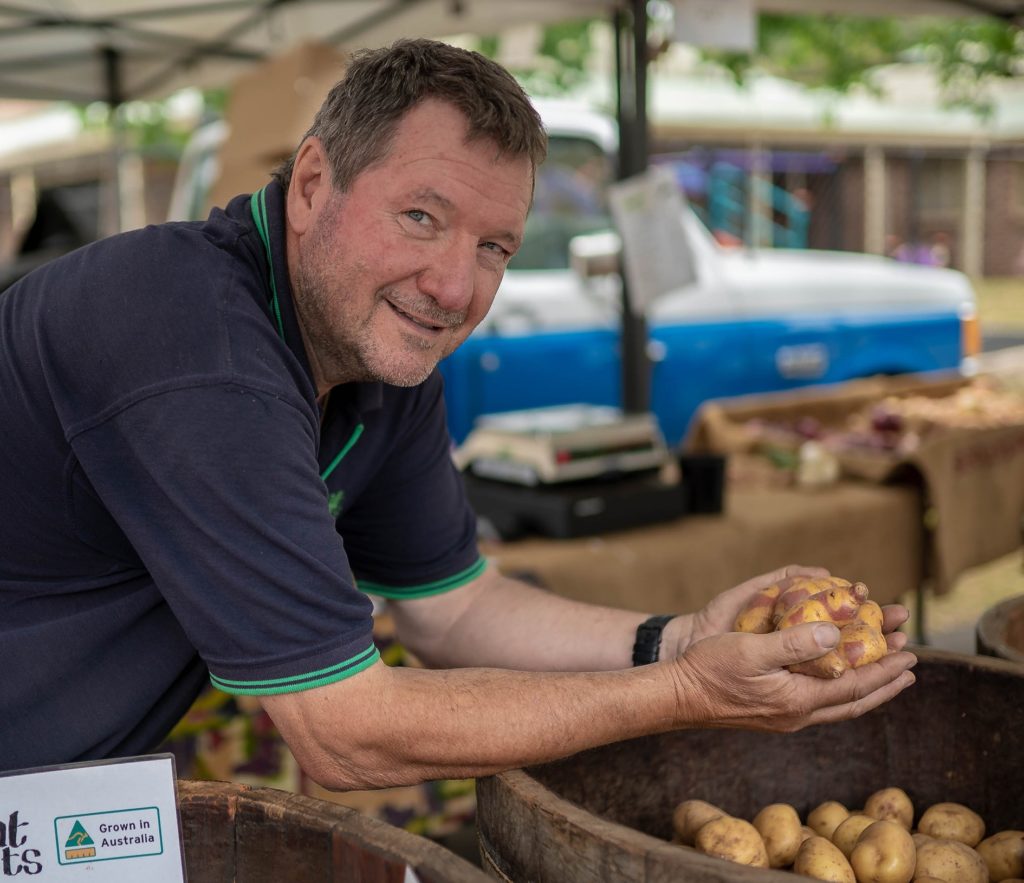
Taking a chance
Keith Platt of potato company Great Roots used to be a tomato man. But one day, about 20 years ago when he was selling his produce at a farmers’ market in Sydney, he started chatting to the man running the stall next to him. It just happened to be Graham Liney.
“I was fascinated by his potatoes,” Platt says. “There were ones I remembered from my childhood in the UK. One thing led to another, and I eventually teamed up with him.”
Platt now works on the development of new potato varieties, introducing them to Australian growers and supplying chefs eager to find the best potatoes for their dishes. But often, finding farmers who are willing to try growing these new varieties can be tricky.
“It’s a big gamble,” Platt says. “The gamble comes with finding a farmer who’s willing to invest the time and money required to grow a crop that no one’s ever heard of here before. They have to be able to grow enough of them, and they have to find a market for them. Because if you can’t sell them for a profit, what’s the point?”
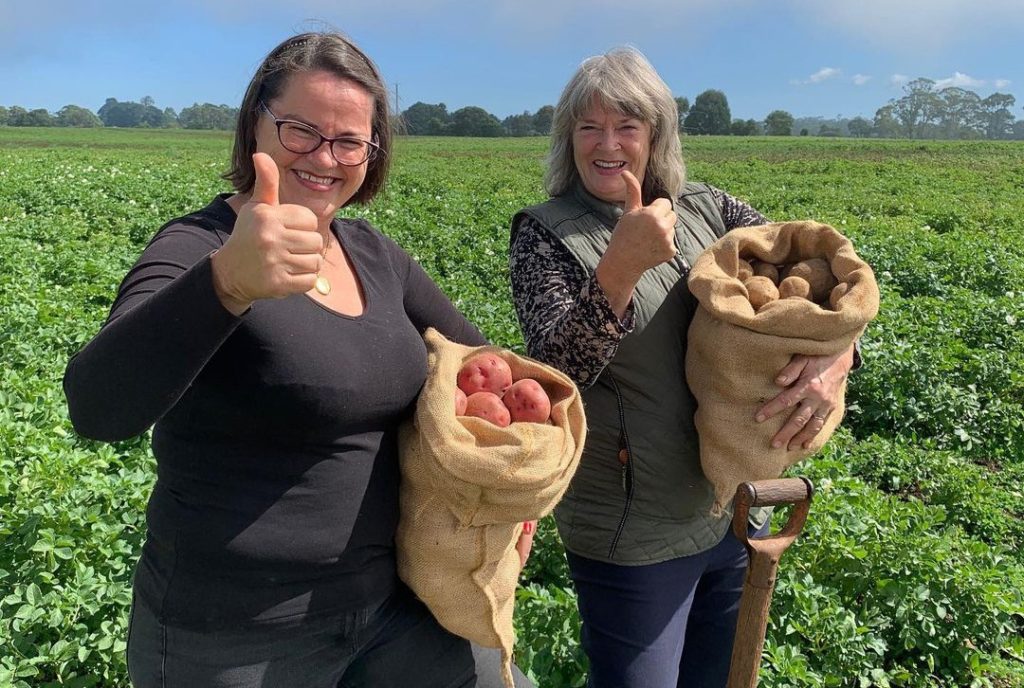
Waxing lyrical
Catherine Ramage and Kerri Farrell of Victoria’s Spud Sisters have also been involved with potatoes for decades. The sisters grew up in a potato-farming family, and now source the best varieties for consumers and restaurants. Top chefs such as Ben Shewry from Attica seek out the sisters’ expertise on the best spud varieties for their culinary creations.
“We work to educate people about the differences between floury and waxy varieties,” Farrell says. “Some people say they don’t like floury potatoes because they’re pasty. But that would’ve been something from a supermarket. A lot of their floury potatoes are pasty. Supermarkets grow their own variety because it stores well and looks good on the shelf.”
The best floury potato varieties include Maris Piper, Innovator, King Edward and Yukon Gold. Waxy varieties include Dutch Cream, Nicola and Tasmanian Pink Eye.
“The floury potatoes are your frying potato; your crunchy roasted potato,” Ramage explains. “They’re good for fluffy mash, potato rosti or hash browns. Waxy potatoes are creamier. They’re your good boiling potatoes, and for potato salad or creamy mash.”

Searching for spuds
So, where can you find yourself the kind of delicious potato that will make your dishes shine? You’ll be unlikely to find many at the supermarket. Experts like Liney, Platt and the Spud Sisters are making progress. But getting the retail world on board can be frustrating.
“For 20 years, I’ve been banging my head against a brick wall, trying to get shops to stock different potatoes,” Platt says. “But it’s a very disheartening process to get supermarkets to take a product. They want something that looks like a freshly minted Lamborghini. They don’t care what it tastes like, and they don’t want something that looks different.”
The easiest way to find the best potatoes is at your local farmers’ market. The Spud Sisters regularly hold stalls at markets in their area. You can also order their potatoes online.
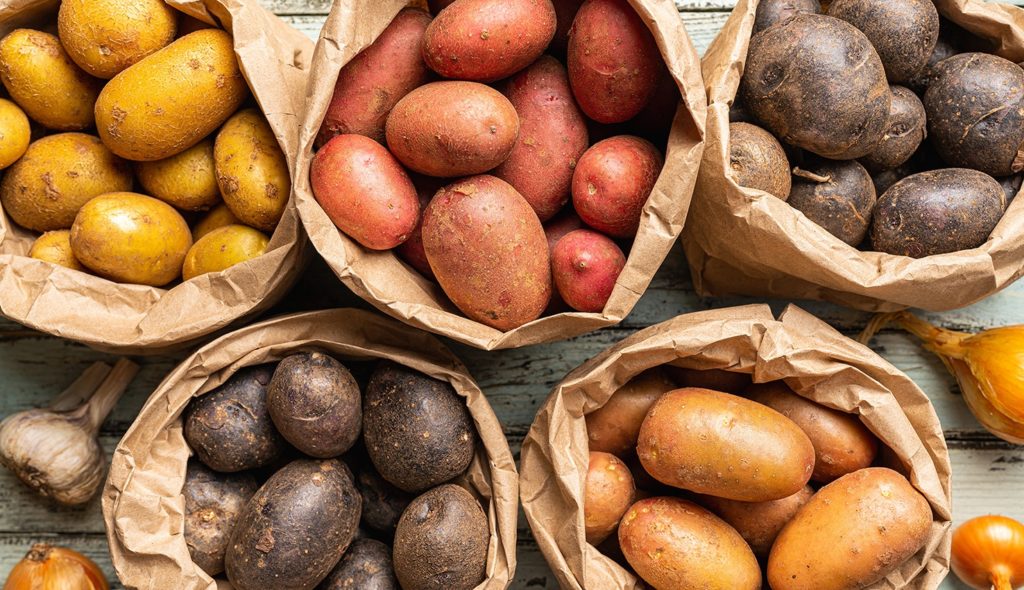
Taste the difference
The good news is that while breaking into retail might be tough, when it comes to the average spud-loving Aussie consumer, Farrell and Ramage are optimistic.
“I love that people are starting to ask for certain varieties of potato,” Farrell says. “Maris Piper is very popular now. That’s your Jamie Oliver go-to spud. These varieties become popular when they’re put in recipes, so people look for them.”
So next time you want to make a creamy mash or some crispy roast potatoes, dare to experiment. Find a potato grower at your local farmers’ market and ask for their advice. The difference that the right variety of freshly harvested potato can make to your cooking is huge. This is something our potato pioneers are so passionate about communicating.
“We want to demystify the mystery behind spuds,” Farrell says. “I think the really lovely thing about having all these varieties is that people are discovering that the difference between a fresh potato and one from the supermarket is miles apart.”


